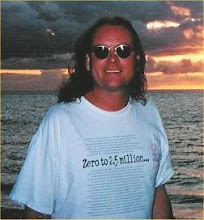But I managed to create some memorable tracks. This is one of them, I think. The title of this track comes from combining the name of recording artist Gino Vannelli, whose keyboard sounds and grooves definitely influenced this composition, and the film The Empire Strikes Back, which was playing on cable TV the afternoon I decided to finish this track instead of watching TV.
 |
| Gino had some serious hair, didn't he? |
I had just purchased a used Korg M1 at the time, and though it's 128 factory sounds had already been used on thousands of pop recordings, I was oblivious to this since I was going through a period of time in my life where I listened to absolutely no popular music (if I could help it). The first M1 sound you will here in this recording is still in use today as the theme song to the radio program "Marketplace" from American Public Radio. Anyway, two distinctive M1 sounds are what started out this track at the time, followed by some hard-driving synth bass and slamming drums, and a bit of raw B3 organ. Later on, these sounds are joined by some lead synthesizer and clavinet.
When I decided to rework this song in Pro Tools 10 recently, I ported only the MIDI tracks over from my PC and started choosing all new virtual instruments to play the parts. Thing is, I simply could not recreate the original vibe with anything other than those two Korg M1 sounds. Lucky for me, Korg makes perfect virtual recreations of their M1, Wavestation, PolySix and MonoPoly synths! Once I dialed in those first two sounds, the original vibe was totally there, ready to be augmented by much better-sounding instruments for the rest of the track.
One set of instruments that didn't translate very well from the MIDI files was the drum and percussion tracks. They sounded robotic and stiff; and way to repetitive to me. So, I fired up Toontrack's EZDrummer plugin and started searching for some appropriate grooves in 6/8 time. Luckily, I found a set of MIDI grooves that are part of their Songwriters' Drumpack series that fit pretty well. The tough part was having to edit and reprogram some of the fills to match the really busy and progressive kinds of fills required for some of the turn-arounds. But once I was done, the track absolutely came alive.
So, without further delay, here is the track titled "Gino Strikes Back", available on SoundCloud:
And here is a direct link if you would like to download it: Gino Strikes Back.mp3
And just for kicks here is the original mp3 of all those vintage hardware instruments mixed down direct to DAT in the late 90's: Original 90's version




























